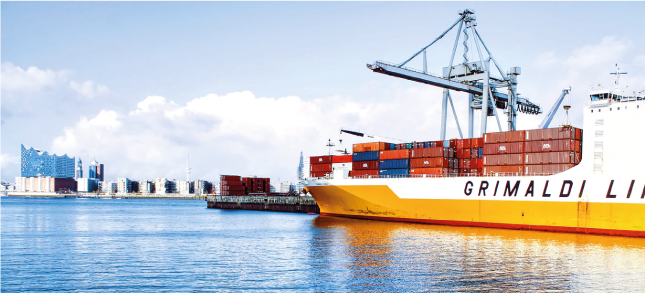There is still a degree of uncertainty surrounding the implementation of the IMO’s sulfur cap on 1 January 2020. With 90% of global trade being seaborne and around 50,000 ships needing to demonstrate compliance before the new legislation comes into effect, continued uncertainty could result in serious disruption. The key to avoiding this worst-case scenario is for ship owners to take a proactive approach to compliance. Operators don’t have to wait around for governments to iron out the details.
There are clear and actionable steps that can be taken today to guarantee that they are meeting the new sulfur content guidelines. Hitachi High-Tech’s VP of Sales and Service for EMEA, Paul Bunting, looks at some of the things that should be at the top of your list of sulfur cap 2020 considerations.

Photo by Axel Ahoi on Unsplash
Ship owners will need to focus on the best methods for verifying the sulfur content of their marine fuel. Bunker delivery notes (BDN) are likely to be an important part of this strategy, but simply obtaining the paperwork when your vessel takes on fuel may not be enough. Utilising an X-ray Fluorescence (XRF) analyser to quickly and accurately check the sulfur content of the marine fuel you purchase is one verification strategy for ship owners.
Coastal and port state authorities will be able to take samples from ships to verify their compliance, so using XRF technology to prove compliance at the point of sale will be hugely advantageous for ship owners. Combining the traditional paperwork of a BDN with a cutting edge technological solution gives a level of certainty about the sulfur content of fuel that cannot be provided by a BDN alone.
The exact cost of non-compliance with the IMO sulphur regulations 2020 is still uncertain at this point. Enforcement duties for the new legislation in its current form fall to the individual port or government authority of specific jurisdiction. This could potentially lead to a divergence in the penalty regimes being implemented across the globe.
This makes acting to guarantee your operational compliance all the more important.
While ship owners may initially balk at the price of employing technology like XRF analysers, the cost of these solutions will be less than those incurred through de-bunkering fuel or being held at port due to non-compliance.
Through our four decades of providing reliable and cost-effective XRF analysis solutions, we have prioritised operational flexibility to meet our customers requirements. We can provide ship owners with both the benchtop and portable analysers, enabling ship owners to fit the technology to their operations rather than the other way around. Easy to use and requiring minimal user training, these solutions offer an intuitive way to accurately measure the sulfur content of fuel while conforming to test method standards like ASTM D4294, ISO 8754 and IP 336 to deliver laboratory-quality results.
IMO 2020 compliance is going to add extra emphasis to effective data management, as ship owners should be looking to proactively prove the sulfur content of the marine fuel they are using. Hitachi High-Tech’s cloud service and data-sharing enable you to store, share and manage analysis data anywhere, anytime. The analysers themselves can store up to 100,000 results. Results can also be printed or transferred to USB for easy access.
The LAB-X5000 and X-MET8000 are the optimum solution for ship owners looking to take an intelligence-led approach to changing emissions regulations and avoiding penalties for non-conformance.
As well as providing market-leading products, our service and support provides clear operational benefits to our clients. By offering in-house service and remote diagnostics, we keep your operations moving at all times. Whether you require a quick telephone call to quickly address an issue, or you need us to take a more hands-on approach through online diagnostics, our expert team is there to support you.
Learn more about our XRF analysers for marine fuels analysis, or to talk to a member of our team, contact us today.